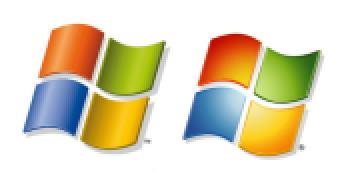Microsoft's efforts to make the Windows client behave in accordance with European antitrust laws are in no way limited to Windows 7. Sure enough, Windows 7 is the only release of the operating system with E editions, designed to offer the platform stripped of Internet Explorer 8. But, at the same time, the Redmond company is looking to make Windows Vista, including SP2, and Windows XP, including SP3, compliant with the EU antimonopoly regulations. In this context, the software giant is proposing no less that Vista and XP also get Windows 7's browser ballot.
At the start of this year, the European Antitrust Commission found Microsoft's Windows and IE bundle illegal under the region's antimonopoly regulations. In response, the company amputated IE8 from Windows 7 and created the E flavor for all SKUs of the client. However, Microsoft came back with the proposition of a ballot screen, which would allow end users running Windows 7 complete with Internet Explorer 8 to download and install another browser of their choice, including rival products. This is also valid for users of Vista and XP in the European Economic Area.
“Microsoft will distribute a Ballot Screen software update to users within the EEA of Windows XP, Windows Vista and Windows Client PC Operating Systems, by means of Windows Update as described hereafter: A software update enabling the Ballot Screen to be displayed will be made available to all current and future users of Windows XP and Windows Vista who receive updates from Windows Update. For Windows XP and Windows Vista users the Ballot Screen update will first be made available between 3 and 6 months after the adoption of the Commission's decision under Article 9 of Regulation 1/2003.”
The scenario is similar for the successor of Vista. “For Windows 7, the Ballot Screen update will first be made available to users by the date of the general commercial release of Windows 7, or within two weeks of the adoption of the Commission's decision under Article 9 of Regulation 1/2003, whichever comes later. For Windows Client PC Operating Systems after Windows 7, the Ballot Screen update will first be made available at the general commercial release date of such an operating system,” Microsoft explained.
The Redmond company is looking to serve the browser ballot refresh via Windows Update as an “Important” update for Vista and Windows 7 users and a “High Priority” update for XP. This means that users with Automatic Updates enabled will have the browser ballot delivered to them automatically. Following deployment, the ballot screen will prompt them to choose the browser they want to use. Microsoft will also offer the possibility to put the decision on standby with the Select Later button.
“(1)The Ballot Screen will be populated with the most widely-used web browsers that run on Windows with a usage share of equal to or more than 0.5% in the EEA as measured semi-annually by a source commonly agreed between Microsoft and the European Commission, but not more than ten (not counting different versions of one and the same browser). In addition, if a browser’s usage share is among the top 10, but that browser is no longer actively offered by its vendor, that browser will not be included in the Ballot Screen,” Microsoft added.

 14 DAY TRIAL //
14 DAY TRIAL //